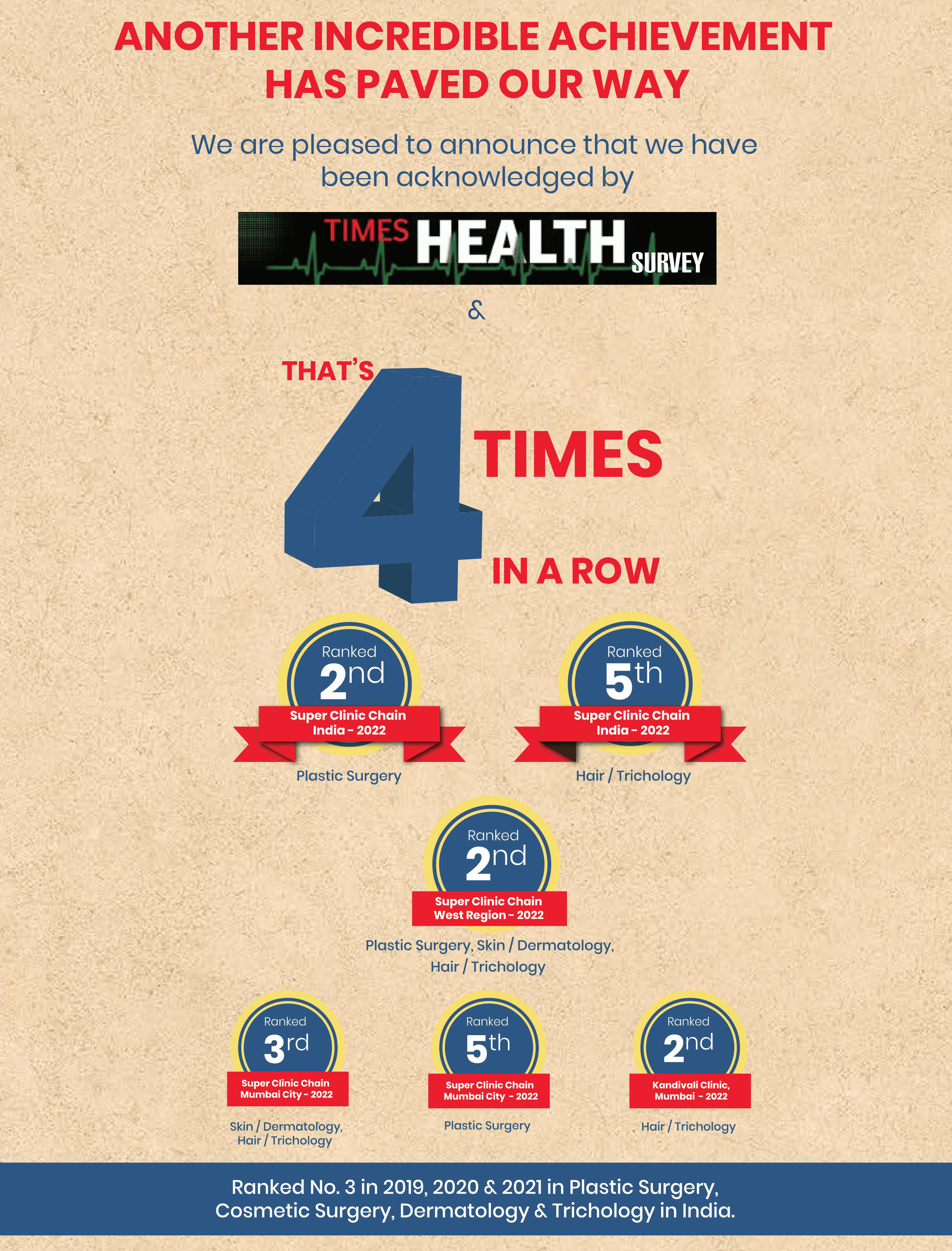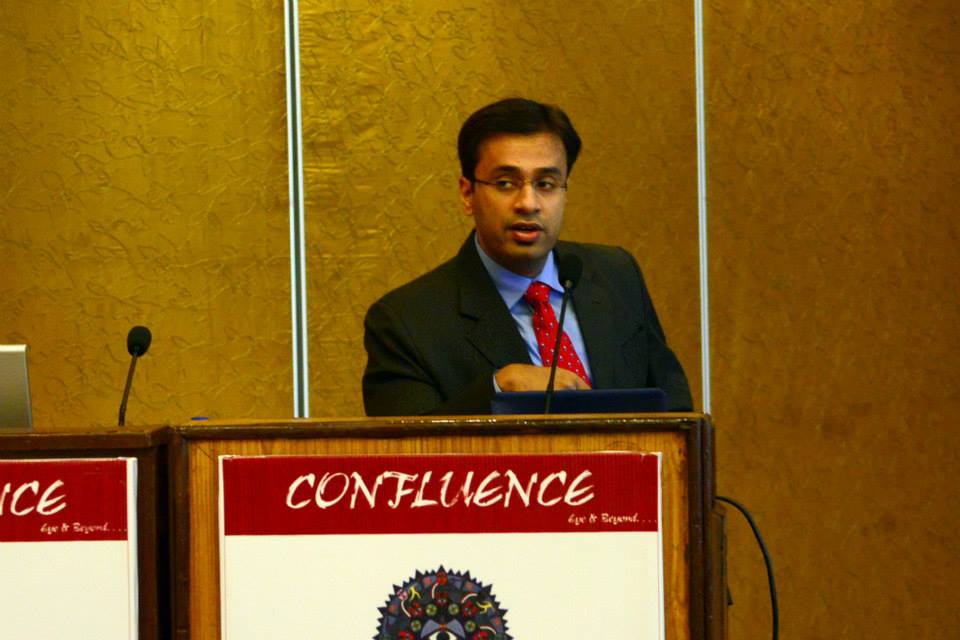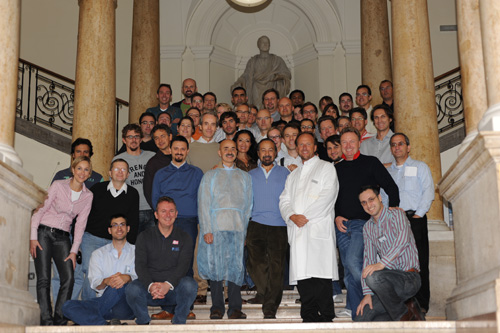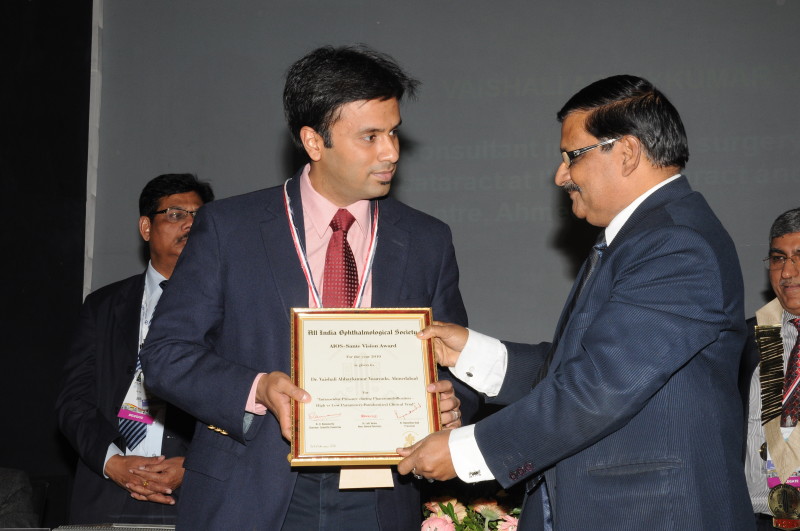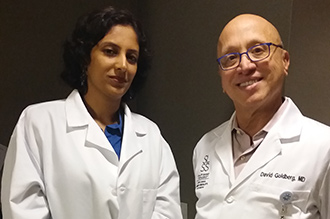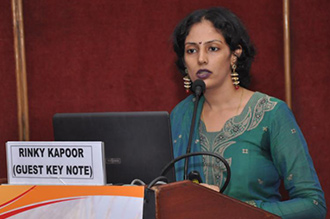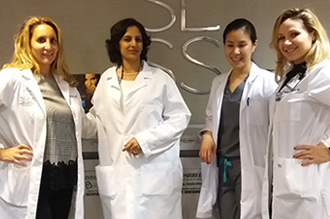A patchy beard does not look good on any man. The simple solution to the same is to have a beard transplant in Mumbai India. The beard transplant cost will depend on the amount of hair that needs to be transplanted. Body hair transplant is done by the best hair transplant specialists in Mumbai India. The high beard transplant cost indicates that you can get the kind of beard transplant that you want. When you visit the specialist in Mumbai India for the beard transplant, make sure that you carry a photo with you of what you want to look like. Beard transplant can be done through the part of the scalp hair transplant procedure that involves taking hair from the back of your scalp (because it resembles the beard hair the best) and transplanting it on the beard. Beard transplant cost will cover the number of sessions required to complete the process of body hair transplant. Body hair transplant to the head is another popular process of body hair transplant in Mumbai India after beard transplant. Body hair transplant to head is best done from the hairs from beard and chest. In the body hair transplant to head, the temple point hair are taken from the arm hair because they are finer. Body hair transplant to head is a very delicate process and it is necessary to match the body hair to be transplanted to be as close as possible for natural looking and stable results. A cosmetic match is as important as the yield and the best hair restoration specialist in Mumbai India will be able to give you the excellent results that you desire.
Not everyone with hair loss requires hair transplant/ transplantation/ implantation surgery. Many cases of advances hair loss also can be treated with medical therapy and medication treatments. A good hair loss doctor/ trichologist will assess the causes of hair loss, including hormonal balance in the body and then precribe the best treatment, whether surgical or non-surgical. There is a lot of advanced hair growth medical research also like the QR 678 and stem cell hair injections and you should choose a dr who has knowledge of these as well. However, if you do need hair transplant surgery, please make sure you go to a plastic & cosmetic hair surgeon who is aware of follicular unit hair transplantation (FUT), follicular unit hair extraction (FUE) and Direct hair implant (DHI) so that your surgeon can suggest the best option for you.Hair Transplants—follicular unit grafts and multi-follicular unit grafts Modern techniques of surgical hair transplantation can restore lost hair and replac`e or re-shape your hairline with your own natural, growing, permanent hair, which needs no more care than the ordinary washing, styling, and trimming you have always done. Transplantation can be done today so well that often a barber or stylist cannot even tell that grafts have been placed. Philosophy of follicular unit micro grafting
Hair naturally grows, in clusters of one, two, three, and sometimes four hairs, these clusters are called “follicular hair units. This procedure imitates nature by relocating these naturally occurring "follicular hair units" from the donor area (i.e. the back and the sides of the head) to the recipient site (balding area).It has been shown that when single-hair micrografts are generated from breaking up larger follicular units, their growth is less than when the follicular units are kept intact, demonstrating the fact that "the whole is greater than the sum of the parts" and supporting the concept of the follicular unit as a physiological entity.
The follicular unit grafts are trimmed under magnification and have a better hair /skin ratio. This allows the surgeon to keep the recipient sites small and space them closer together, while at the same time maximizing the amount of hair that can be placed into them. A large number of grafts, up to 2000 grafts can be transplanted in one session. Once the hair growth starts these transplanted follicular unit grafts are indistinguishable from the natural groups of hair in the nearby area. Practiced by an experienced and skilled hair restorative surgeon, Follicular unit transplantation can produce a look that is undetectable and completely natural, making full use of the patient's donor supply in the least number of sessions.Candidates for follicular transplant surgery Anyone who has experienced permanent hair loss may be a candidate for hair restoration surgery, including:
How do I know if I am a good candidate for hair restoration surgery?
The elements that Dr Shome assesses to determine whether you are a good candidate include such things as: your general state of health; hair’s texture—fine or coarse; the contrast between the your hair color and skin color; the density, i.e., the number of hair follicles per square inch of the hair in the donor area; the size of the area to be covered; the size of the area of donor hair; whether or not previous grafting procedures have been done; and your goals and expectations. Making an accurate diagnosis and making treatment recommendations require an examination by doctor and a frank discussion of possibilities between the patient and the doctor. Dr Shome will also give you a realistic estimate of the total cost of the planned procedure or procedures. One must understand that transplantation redistributes existing hair follicles and cannot create new hair follicles.
What happens during a hair transplant procedure?
Hair transplantation surgery is considered to be "minor out-patient surgery." Hair transplant procedures can take from 4–8 hours and are usually performed using local anesthesia on an out-patient basis, occasionaly with some supplemental oral or IV medication. Patients are awake as usually no sedation is used. There is typically little discomfort during the surgical procedure. The donor areas, where the grafts have been harvested, are usually closed with sutures. These are usually removed in 7–14 days. Dissolvable sutures may occasionally be used in order to eliminate the need for you to return for suture removal. The recipient sites, where the grafts are placed on top, are essentially small, superficial needle holes or slits in the skin of the scalp.A typical follicular unit transplant as done by Dr Shome proceeds as follows: After a light breakfast you are expected to report to the hospital by 7.30 am. A staff of the Hair Restoration team at Apollo Hospitals will receive you. All the necessary paper work and formalities will be completed at this time. By 8.00 am Dr Shome will meet you and review the plan for your hairline and discuss the number and placement of the grafts.
You will be asked to change into medical gown/hospital clothes and a shot of premedication is given to you. The hair in the donor area is trimmed and you will be asked to have a head wash with a medicated scrub. After drying your hair you will be seated in a chair that is very similar to the dentist's chair. Your vital signs (pulse, blood pressure) are checked. An IV line is secured. For the initial part of the procedure the chair will be completely flattened and you will be asked to lie with your face down.
After making sure you are comfortable Dr. Shome will inject the local anaesthetic on to the prepared area on the back of your head. In all likelihood, the injection of the local anesthetic is the only part, in which you will feel an occasional sharp but tiny pain. By now the back of your head would feel numb and after confirming this Dr Shome would proceed with next step of the surgery. Using a scalpel a strip measuring 1 cm – 1.25 cm wide by 15 cm long (on an average) is removed from the donor area. Because the strip is so long and thin, the donor defect is not wide, so closure is possible with very little tension.
The donor area is closed with stitches, in two layers, an inner layer of absorbable sutures and an outer layer of non absorbable sutures, which would need removal. Dr Shome uses the method of Trichophytic closure, a method by which the scar will not be hair less and hence better concealed. What is done is that 1-2mm of the top edge of the donor defect is trimmed off. This transects a row of 1-2 follicular units, which then grow through the eventual scar, thereby dispersing its obvious linearity.
Throughout this part you would not have felt any pain. The suture line is well covered by the hair around it and is not visible ordinarily and in time, would be virtually impossible to detect it even if one were to look for it while combing. At this point you will be allowed a break and you could take some refreshments and generally relax.
The donor strip will be divided into slices or slivers, maintaining the integrity of the follicular units. Dr Shome himself does this important step using magnification. These slivers are then handed over to trained assistants, who separate the slivers into follicular micro grafts, which contain 1, 2, 3 or 4 hairs. It requires several trained assistants to prepare on average 1500 – 2000 grafts
While the assistants are preparing the grafts, Dr Shome will start the anesthetization of the recipient area. You will receive a couple of shots over the front, above the eyebrows and some over the top. Again these needle shots may give you a few sharp pains but only temporarily. Once the anesthesia takes effect your scalp will be completely numb.
The recipient sites are made with 18G, 19G or 20G depending on the size of the grafts. Dr Shome makes the recipient holes and places the graft simultaneously in a manner quite similar to putting ones foot into the shoe using the shoehorn. Care is taken to match the direction of the graft insertion with that of the surrounding hair. Spacing and the natural pattern is maintained. All through this you will not feel the pain of the needle pricks.
The size of the grafts allows Dr Shome to place the grafts as close as it is possible with minimal injury to the scalp. Graft placement will take 2-4 hrs depending on the number of grafts. You can spend this time listening to some light music. During this period if need be you may take a break and have some refreshments.
By 2.30 pm all the grafts will be in place and after reviewing the grafts you would be sent out from the hair restoration room. There is no dressing on the grafted area. A small dressing is kept on the donor area for the first 48 hours to soak any collected blood and prevent soiling of the pillows. You may wear a lose cap with prior approval from Dr Shome so as to prevent the grafts from sticking to the cap. You will receive a painkiller before you leave the hospital premises. You will be advised to take antibiotics for five days to prevent infection of the grafts. Painkillers may be required on the first few days. Cold compresses over the forehead are helpful.
After changing into your clothes, by 3 pm you will be ready to go home. Though it is possible for you to drive, it is not recommended and it is better to have someone pick you up and drop you home.
What happens after hair transplant surgery?
Hair transplantation is a very safe, relatively minor surgical procedure. Significant complications are extremely rare. There is usually little or no discomfort in the grafted area. Most patients feel some "tightness" in the donor area for 1–2 days and are prescribed a mild analgesic to help cope with this. Patients may be asked to use moist compresses or sprays and to sleep in a semi-upright position for 2–3 days following the procedure to minimize swelling and bruising. Small crusts may form on each graft, and these can usually be camouflaged by any existing hair that can be combed over the recipient area, or with camouflage products such as HAIROUSE, DermMatch, Couvre, or Toppik. These crusts will flake-off by 5–14 days after the surgery, the smaller follicular unit scabs often falling off at 4–6 days and the multi-follicular unit scabs taking longer. The transplanted hair seen growing out of the scalp may initially be shed; however, the roots remain and will be dormant for 10–14 weeks, at which time the new hairs will all begin to grow. Numbness that may occur in the donor or recipient area usually disappears within 2–8 months following surgery.
As stated above, complications are rare. Minor inflammation can occasionally occur around a newly transplanted hair follicle, similar to an infected ingrown hair or pimple, and usually responds to simple warm compresses. The scar that occurs in the donor scalp as a result of the removal of donor skin is usually quite narrow and can be easily hidden by the surrounding hair. The graft sites in the recipient frontal area heal with almost no visible scarring and are covered by the transplanted hair. A minority of patients may experience mild swelling in the forehead area for a few days following surgery. It typically appears around the 3rd post-op day and goes away after 3–4 days. Infection in either the donor or recipient area is extremely rare. Many patients experience a small area of numbness above the donor scar and in the rear central scalp that gradually disappears after a few months.
RISKS, SIDE EFFECTS, AND POSSIBLE COMPLICATIONS:
In the overwhelming majority of hair transplantation procedures there are no complications. However, a number of side effects, risks, and complications can occasionally occur. For the purpose of putting these things in perspective, we will divide them into two categories: those that occur occasionally and those that occur very rarely and are included here for the sake of completeness:
Side effects that occur only occasionally:
Side effects or complications that occur only very rarely:
POST TRANSPLANT CARE AND ADVICE
You may shampoo in a limited fashion starting 48 hours after your transplant. Take a plastic container into the shower and use it to pour water over your head several times. Then put a couple of capfuls of the shampoo, a pH balanced shampoo, into the bottom of the pitcher or cup. Add a slight amount of water to make a sudsy solution. Pour this over your scalp and shampoo by working your hair between your fingers and thumb. You may shampoo daily in the limited fashion. On the fifth day following the procedure you may let the shower stream hit your scalp. After 7 days, you may gently massage the hair in the grafted area and after 10 days, you may resume normal shampooing.
When will the grafts start to grow?
Growth starts at about 3-6 months after the transplant. In the initial phase of growth the hair are fine but as time passes by (8-12 months), they gain length and diameter. By the end of one year, the "new" hair should be as robust as the surrounding non-transplanted terminal hair and growing at the same rate.
What are the side effects / complications of hair transplant?
In the overwhelming majority of hair transplantation procedures there are no complications. However, a number of side effects, risks, and complications are mentioned in the medical literature and these are quite uncommon. For the purpose of putting these things in perspective, you may refer to PRE AND POST CARE. If you are worried about any particular complications you could contact Dr Shome for detailed information on the same.
Can baldness be prevented or cured by using a form of gene therapy?
Genes play a very important role in causing androgenetic alopecia. Hence manipulating the genes responsible for hair loss will cure baldness. Dr Angela Christiano the founder of the gene responsible for a condition called Universal atrichia (total absence of body hair, usually at birth), is involved in ongoing search for the elusive gene causing baldness and feels that someday gene therapy will be used to treat hairloss.
What about cloning?
Hair cloning is a slang term for engineered hair growth. It involves isolation of a group of cells at the base of the hair follicle. These follicular cells are multiplied in a laboratory and they divide to create new follicles and generate new hair, which are then implanted back into the bald area. Early results are promising, but it will take almost a decade of further study, clinical trials and meeting regulatory requirements before cloning is widely available. This would be a boon for patients with limited donor area whenever it is available.
Any new treatment options?
Researchers in Japan claim to have isolated two genes responsible for androgenetic alopecia. They also claim to have discovered a plant-derived ingredient called 6-benzyl aminopurine which could help revitalize the two genes and restore hair growth. It is difficult to verify this claim till large-scale studies are conducted.
What are the available remedies for combating hair loss? What is efficacy of herbal remedies?
At present there are only two remedies approved for hairloss. In terms of topical applications we have Minoxidil or its derivatives and in the pill form we have Finesteride in 1mg strength, which are effective (either singly or jointly) in large number of patients. Amongst the herbal remedies, Saw palmetto has been used as an anti androgen but there are no conclusive studies to show its effectiveness for male-pattern baldness. Other herbal remedies, for the most part, have little if any effect on scalp growth. Certainly there have been no conclusive clinical trials showing the effectiveness of herbal remedies. Of course, the most permanent treatment for hair loss is hair transplantation, which is safe, effective, long lasting and cost effective. Hair transplantation has been refined over the last few years and now it gives a very natural result.
What about various treatment options advertised in media and the internet?
In general, for male-pattern baldness, scalp injections are not only not effective, they may actually inhibit hair growth. Other mechanical hoaxes consist of rubbing the scalp, applying electric current to the scalp, ultrasound treatments and light treatments (ultraviolet) which have never been shown to be effective in growing human hair. Aside from these treatments, there are numerous products available through the mail or over the Internet, which claim to stimulate scalp and hair growth – but in reality do little or anything. The good news is that most of these remedies will do little harm. The bad news is that most of the remedies will be a complete waste of money.
A patchy beard does not look good on any man. The simple solution to the same is to have a beard transplant in Mumbai India. The beard transplant cost will depend on the amount of hair that needs to be transplanted. Body hair transplant is done by the best hair transplant specialists in Mumbai India. The high beard transplant cost indicates that you can get the kind of beard transplant that you want. When you visit the specialist in Mumbai India for the beard transplant, make sure that you carry a photo with you of what you want to look like. Beard transplant can be done through the part of the scalp hair transplant procedure that involves taking hair from the back of your scalp (because it resembles the beard hair the best) and transplanting it on the beard. Beard transplant cost will cover the number of sessions required to complete the process of body hair transplant.
Body hair transplant to the head is another popular process of body hair transplant in Mumbai India after beard transplant. Body hair transplant to head is best done from the hairs from beard and chest. In the body hair transplant to head, the temple point hair are taken from the arm hair because they are finer. Body hair transplant to head is a very delicate process and it is necessary to match the body hair to be transplanted to be as close as possible for natural looking and stable results. A cosmetic match is as important as the yield and the best hair restoration specialist in Mumbai India will be able to give you the excellent results that you desire.
For more information on Dr. Debraj Shome's work, click on: theestheticclinic.com/dr-debraj-shome.html
